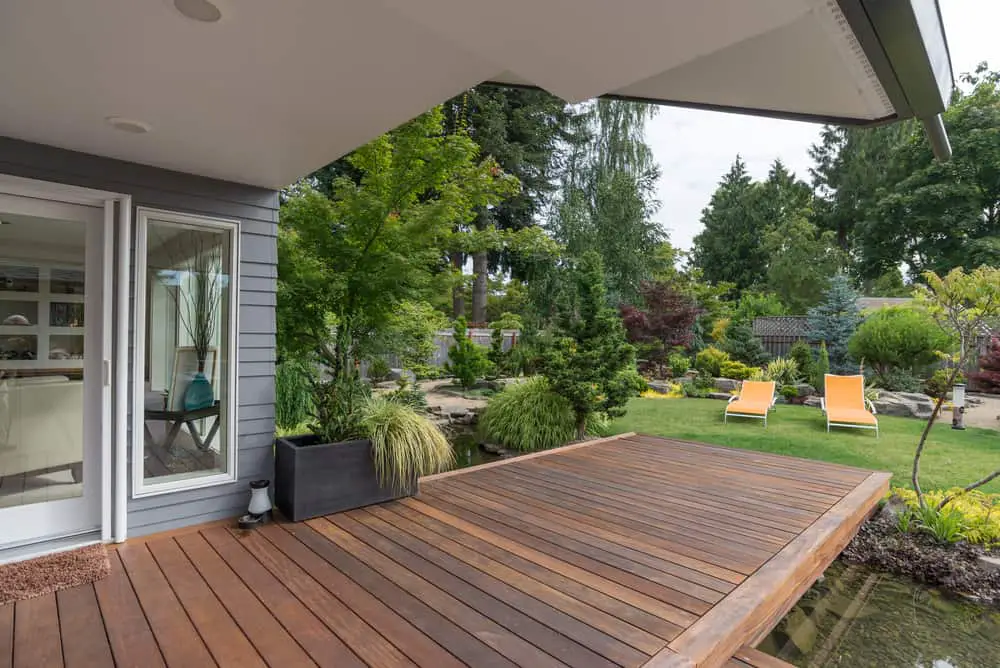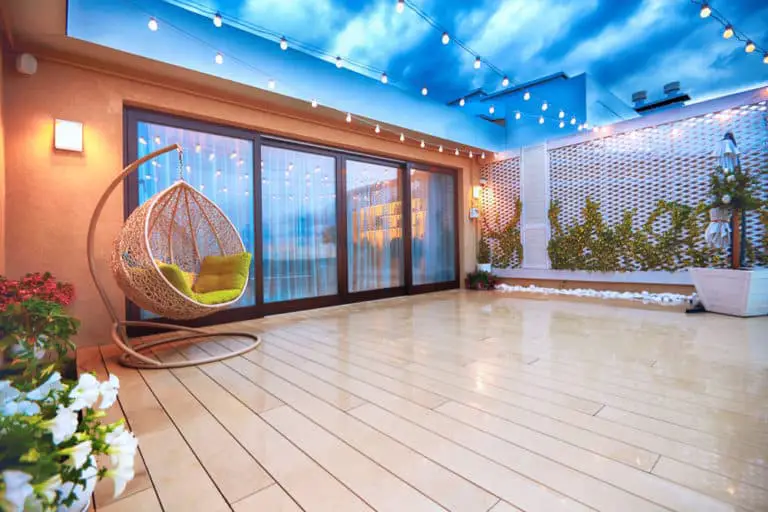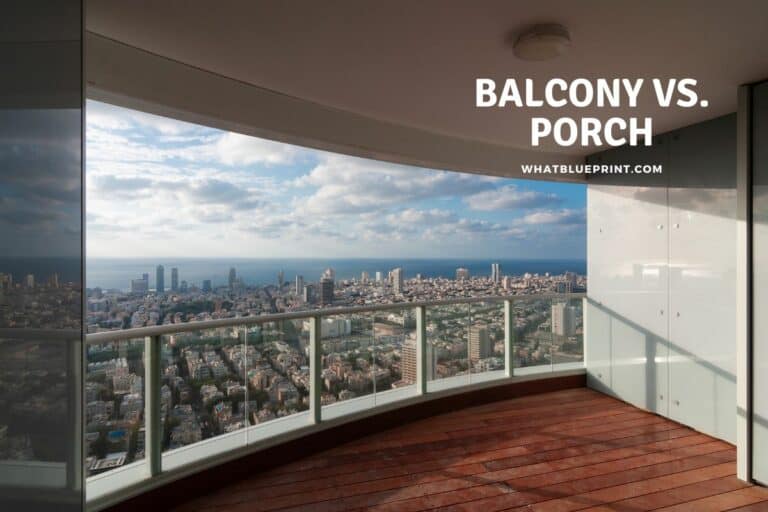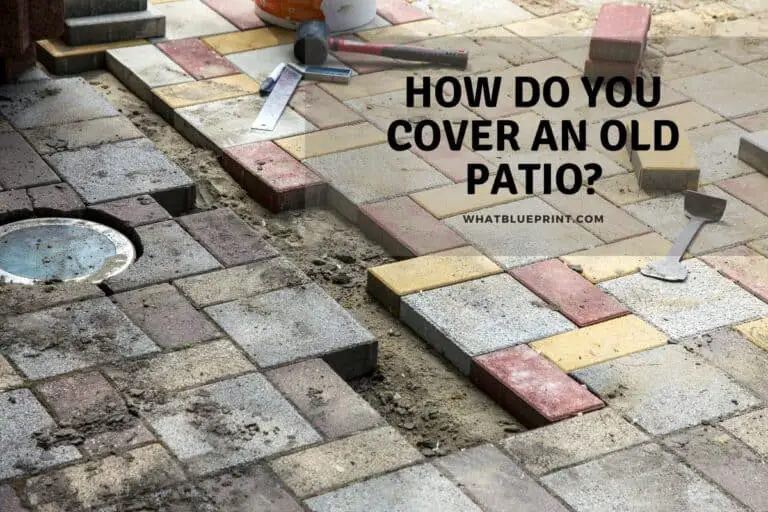Are Floating Decks Any Good?
A floating deck, also known as a freestanding deck, is built at ground level with no railing or steps. This type of deck is built without foundations and simply rests on the ground on a series of concrete deck supports.
Floating decks provide extra living space outdoors and create the ideal area for entertaining guests. Floating decks are affordable and easy to build, and they are simultaneously able to provide comfort, elegance, and extra outdoor living space for everybody to enjoy.
While floating decks have many advantages, they may not be suitable for use in every application. Therefore it is important to have a good understanding of how a floating deck is constructed and whether this type of deck will be suited to your circumstances.
Are Floating Decks Any Good?
Floating decks are an excellent choice if you’re aiming to create a low ground-level deck no more than 30” off the ground. If a floating deck fits within a footprint of two hundred square feet and has a height less than thirty inches above grade, it will most likely not require a permit in order to be built.
The lack of necessity for a building permit is one of the many advantages of floating decks. Because it is low to the ground, a floating deck requires no handrails or staircases, allowing for an easy-to-use space that serves as a flexible platform for patio furniture, a grill, a hammock, and any other amenities you could think of.
Because of the easy installation and the fact that no extensive excavation is required, floating decks can be installed wherever it is most convenient to do so. The ease of installation allows a great degree of flexibility in that the deck can be freely expanded whenever the need arises to do so.
Due to the fact that a floating deck is not attached to your home, it cannot cause damage to the home if it moves. The fact that it is not attached to your house also means that it is far easier to embark on as a DIY project.
A floating deck is a great idea in an area that would otherwise require extensive excavation in order to build a standard fixed deck. Where trees are concerned, it is always far easier to build a floating deck than it is to build a fixed deck.
This is because it is extremely time-consuming to dig around the roots of trees, and this can also cause major damage to the trees themselves. Because floating decks do not require extensive digging, tree roots are not disturbed in the process of construction.
Due to the lack of excavation when building a floating deck, far less dirt is removed and needs to be disposed of. This can be a major advantage, especially if there are high levels of clay in the soil, as clay can be particularly difficult to get rid of.
Because of the fact that less labor and fewer materials are required to build a floating deck, the cost is brought down significantly when compared to a fixed deck. The main difference lies in the deck’s footings, with floating decks featuring footings at grade, while fixed decks have their footings installed below the frost level.
Floating Decks Explained
A floating deck is essentially a ground-level deck. Because it is built no more than thirty inches above ground level, there is no requirement for a footing, railing, or steps. This is a freestanding structure that rests on the ground without any attachments to any other structures on the property.
A floating deck is built on top of a gravel bed (or a solid base made of some such similar material), and it can also be built directly on top of the ground, although this is not highly advisable.
The best support structure for your floating deck is a series of concrete blocks. This is because the concrete blocks keep the timber off the ground away from moisture, which allows the wood to remain dry, ultimately helping it to last longer.
The concrete blocks can either be specifically-designed blocks that are made for use with a floating deck, or they can simply be standard solid concrete blocks without holes. These are cheap, solid, and have a low profile, lending themselves perfectly for use under a floating deck.
Cons Of Floating Decks
There are certain cons to having a floating deck built on your property. Firstly, there is the issue of maintenance. Because the deck is situated closer to the ground, it may be subject to more frequent maintenance than a raised deck.
The maintenance may also be associated with moisture and water management at ground level.
If you look at the financial aspect of things, a floating deck may not provide the best return on investment if you are looking at selling your property at any stage soon after the deck’s construction.
Another disadvantage of a floating deck is that it can easily become damaged by surrounding features. This includes falling trees, but mostly the roots of trees that can cause havoc by lifting a floating deck.
When building a floating deck, one must ensure that it is not built too high. Anything above 30” would require a permit, and this could pose a hazard for the users of the deck. Any heights above 30” could create a tripping hazard, potentially causing people to sprain their ankles.
You should never attach a floating deck to the building, as any movement that happens with the floating deck will cause it to pull away from the building, potentially causing parts of the building to become detached or damaged while simultaneously causing damage to the floating deck.
Codes & Regulations For Floating Decks
One of the biggest benefits of building a floating deck is that it does not usually require a permit to build.
While this should always be confirmed with the relevant building department before work begins, a floating deck will ordinarily not require a permit if it meets the following requirements:
- The footprint is less than two hundred square feet
- It is less than thirty inches tall
- It does not attach to your house
- It does not get in the way of any doors to the outside
A floating deck might be subject to certain zoning rules depending on its size and its placement on the site, especially where relevant to the other structures on the site.
How To Prevent Your Floating Deck From Moving
The ground’s stability and the water management beneath the deck’s foundation are the two most essential factors in preventing the movement of floating decks. If the base adequately drains the moisture underneath the deck’s supports, the deck’s potential movement caused by freezing and melting water will be significantly reduced.
The foundation for a floating deck must be robust enough to hold the deck’s weight while preventing the absorption of water. The absorption of water will eventually cause the surface to rise and fall, resulting in deck movement.
As a result, a floating deck should always be built on solid ground, as an unstable foundation will cause the deck to shift. The material used to support the deck’s support blocks also has a major impact.
A dense base material sufficiently compacted to sustain the weight of the deck – as well as the people and items on top of it – will significantly reduce movement. As a result, a floating deck should always be constructed on solid ground.
Any organic materials near the foot of a deck will absorb a substantial amount of water, causing the earth to swell and develop, raising the ground level. The deck begins to fall as the organic material on the ground starts to dry.
This constant up-and-down pressure might force the soil out, causing the deck to move even further. If the ground on which your deck will be built has a lot of organic material, the unstable soil will need to be replaced with something compactable like gravel or sand.
When it comes to limiting the movement of a floating deck, proper drainage is crucial. This is due to the fact that water can not only wash away the support beneath the deck but it can also freeze, causing the deck to shift.
Water causes wood or other organic matter to swell, causing the deck to rise or fall. As a result, efficient drainage at the deck’s foundation, such as gravel or sand, will ensure that water flows away from the deck without pooling, avoiding the bulk of water-related difficulties.
The movement of your floating deck will be minimized if the deck’s footings are installed on a stable, well-drained foundation. This can be accomplished by placing pier blocks on a gravel base to create a compact, stable, and level surface.
The use of anchors is another option for preventing substantial movement of your floating deck. At the corners, 15″ hoop anchors are set in the ground 6″ out from the deck.
These hoops are pressed into the ground, and a straight rod is inserted into the top of the hoop, preventing the deck from moving too far to the side.
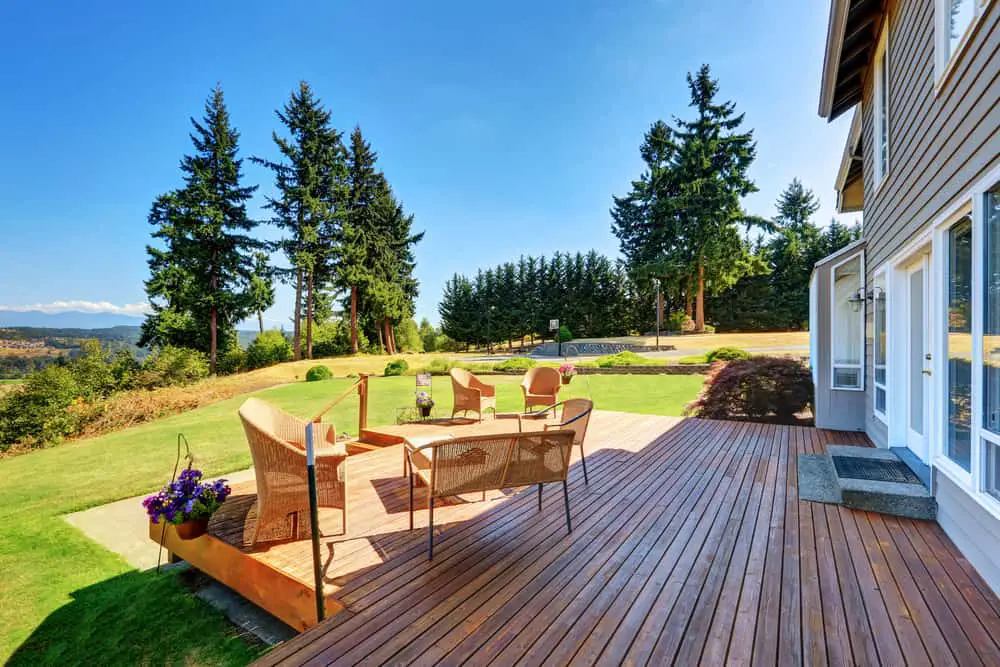
What Goes Underneath A Floating Deck?
It’s critical to make sure that the surface beneath your floating deck can drain properly since this will reduce the impact of water on the deck and its construction. The surface beneath the deck serves a more sophisticated purpose than just keeping the wood dry.
When water freezes, it expands, which can cause chaos under your floating deck if not addressed properly. The materials beneath the deck may be eroded when it melts. As a result, if there is a lot of water in the ground beneath your deck in the winter, the deck may lift.
In the spring, as the ice melts, the deck may begin to sink. As you might expect, this shifting will result in substantial structural difficulties as well as significant movement of the deck.
As a result, it’s critical that the material beneath your floating deck is stable and won’t rot, degrade, or shift. This is why you should use non-organic materials over organic materials such as wood, which can decay and shift over time.
Any organic material will rot, and any material that is extremely absorbent will expand and contract in response to changing rainfall patterns.
Another factor to consider is that the materials beneath your floating deck should be workable in terms of compacting, shaping, and leveling to create the desired surface.
As a result, gravel, sand, or limestone are likely to be your best choices, as they will provide appropriate drainage beneath the deck blocks while also resisting deterioration and remaining easy to work with.
It’s a good idea to utilize landscape fabric underneath your floating deck, but it’s not required. Landscaping fabric, when used in conjunction with gravel, will aid in keeping weeds, insects, erosion, and moisture at bay.
Tips For Building A Floating Deck
In order to build a floating deck that is durable while not overly expensive, pressure-treated lumber will best serve your needs. For the deck, treated pine will be an upgrade to your standard pressure-treated lumber, as will the more expensive options such as cedar and redwood.
Bear in mind that choosing these options would purely be for aesthetic reasons as they will not be more durable than standard pressure-treated decking timber.
Another alternative material to use for a floating deck would be composite decking manufactured out of recycled plastic and wood pulp. This type of decking material is highly durable as well as sustainable.
Conclusion
When it comes to floating decks, it would seem that the advantages far outweigh the disadvantages. If properly constructed, with sufficient preparation work and the correct use of materials, a floating deck will provide a great platform in your garden that will allow for a multitude of activities.
Whether your floating deck is there to provide a platform for barbecues, suntanning, picnics, or games, there are many opportunities to make use of your floating deck and bring immense joy to your family and guests.
Sources
- https://www.countryliving.com/home-design/decorating-ideas/g30878403/floating-deck-ideas/
- https://backyardpatiosdecks.com/building-floating-deck/
- https://kitcheninfinity.com/how-to-build-a-floating-deck/
- https://decksbye3.com/the-best-material-for-under-deck-blocks-are/
- https://everydayoldhouse.com/the-spruces-floating-deck-lessons-learned/
- https://www.thespruce.com/how-to-build-floating-decks-2132000
- https://findanyanswer.com/will-a-floating-deck-move
- https://decksbye3.com/moving-floating-deck-and-how-to-minimize-it/
- https://www.countryliving.com/home-design/decorating-ideas/g30878403/floating-deck-ideas/
- https://kitcheninfinity.com/how-to-build-a-floating-deck/
- https://www.thespruce.com/how-to-build-floating-decks-2132000

